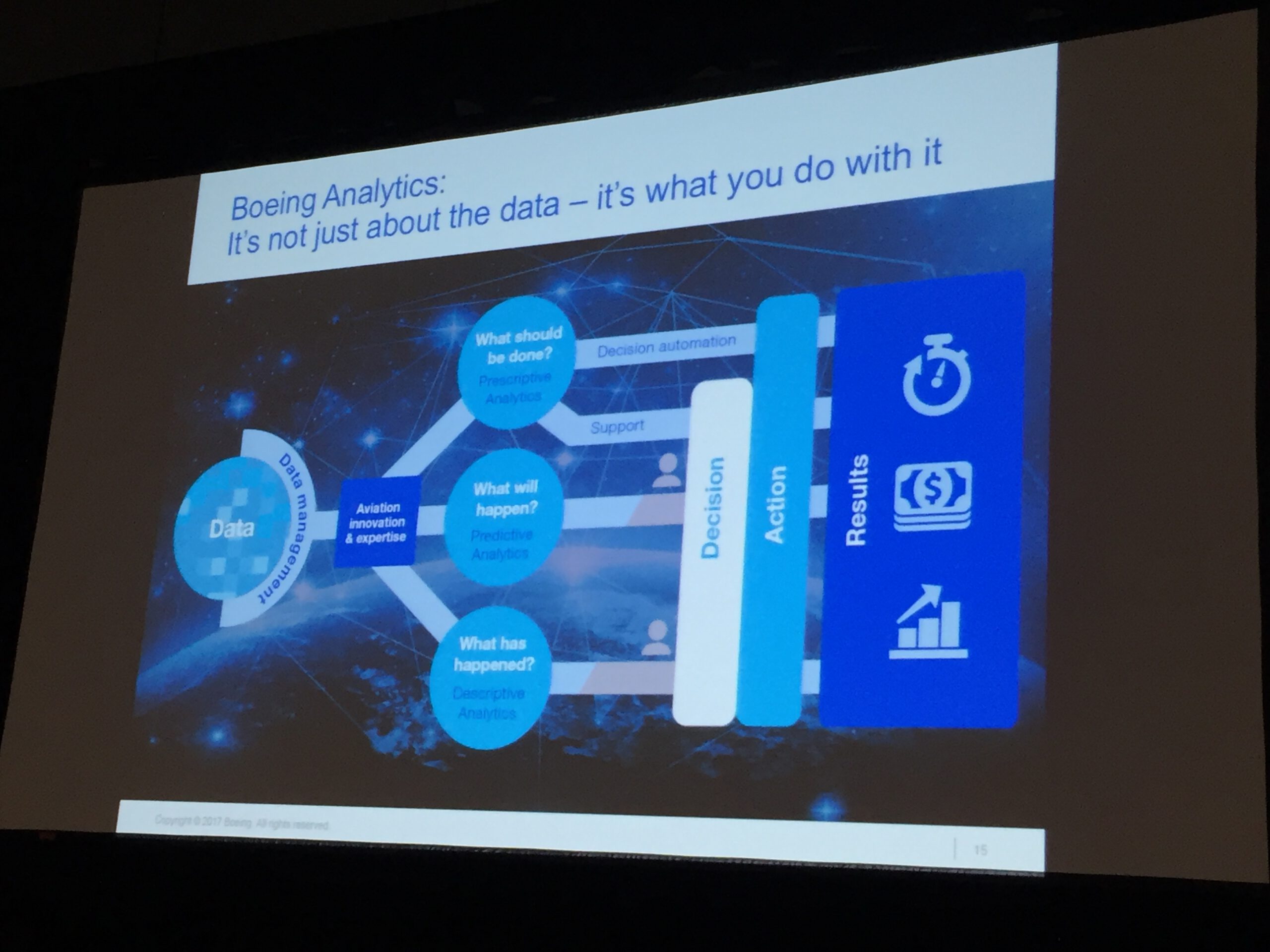MRO Americas, Orlando, FL: An aircraft which can diagnose itself, schedule its own maintenance, order its own parts, and choose when and where the maintenance can be done is the holy grail of aircraft manufacturers and airlines alike. So declared David Longridge, vice-president services sales for Boeing, during the aircraft update session.
Longridge sees it as the ultimate progression of maintenance through the years, from times when defects were perhaps only discovered by a pilot during a pre-flight check, to the first reporting of problems in real time on the 747-400, to the company’s Airplane Health Management system which came into use on the 777-300ER in 2004.
Asked when that holy grail might be achieved, Longridge predicted that it will most likely be part of Boeing’s next generation of aeroplanes, “although aircraft such as the 787 can do much of it today”.
There may well be airlines which do not agree with the philosophy, he acknowledged, but stated that the most important thing was to let airline customer choose. “We’ll enable the products to do as much as possible, but we’ll let the airline decide how much they want to switch on. It may not be the best thing, for example, if an airline is integrating with a much older fleet,” he remarked.
Gustavo Ribeiro, director CRM and technical services for Embraer, agreed with Longridge. “The thing is, if airlines use the technology, we believe they will be more efficient. But we have to work together for us to demonstrate that.”
Ribeiro is been part of the team bring the OEM’s E-Jets E2 family to market. In designing with maintenance in mind, Embraer has moved to more integrated architectures and is using structural health monitoring. “We’ll also have a more connected aircraft through the CMC (central maintenance computer),” he commented.
Airbus’s head of FHS engineering and pool management, Joachim Mirabaud, described the new elements the OEM is using to supporting airlines putting new aircraft into service. “For a smooth EIS (entry into service) we start 24 months beforehand to ensure everybody will be ready.”
Aiding that EIS process are innovations including: the Line Tool, which enables delamination detection by a non-NDT line mechanic; the Composite Box, with all that’s needed for repair in one box; and a new automated process for Bonded repairs.
Beyond advances in the EIS process, reducing maintenance costs is the goal. Mirabaud used the A330neo as his example. “Although it is a re-engining programme, we took the opportunity to refresh the maintenance programme and have achieved a 3 percent DMC cut on scheduled maintenance and 2 percent lower DMC on components.
Big data is important across the programmes of all OEMs. The Airbus A320neo is delivering seven times more parameters than the A320ceo, while at Boeing the number of parameters being tracked has risen from 3,000 on the 747-400 to 150,000 on the 787-9.
Those figures raised the question of the cost to send the vast amount of data, which can now run into many terabytes. “The clever thing is not to send everything at once. In fact you won’t necessarily need to send data from every parameter being measured,” explained Boeing’s Longridge. “However, if you can prevent an AOG for an aircraft with 400 people, it doesn’t matter what the data transmission costs are.”
By Bernie Baldwin, editorial contributor
CAPTION
A key message from Boeing’s David Longridge regarding big data.
